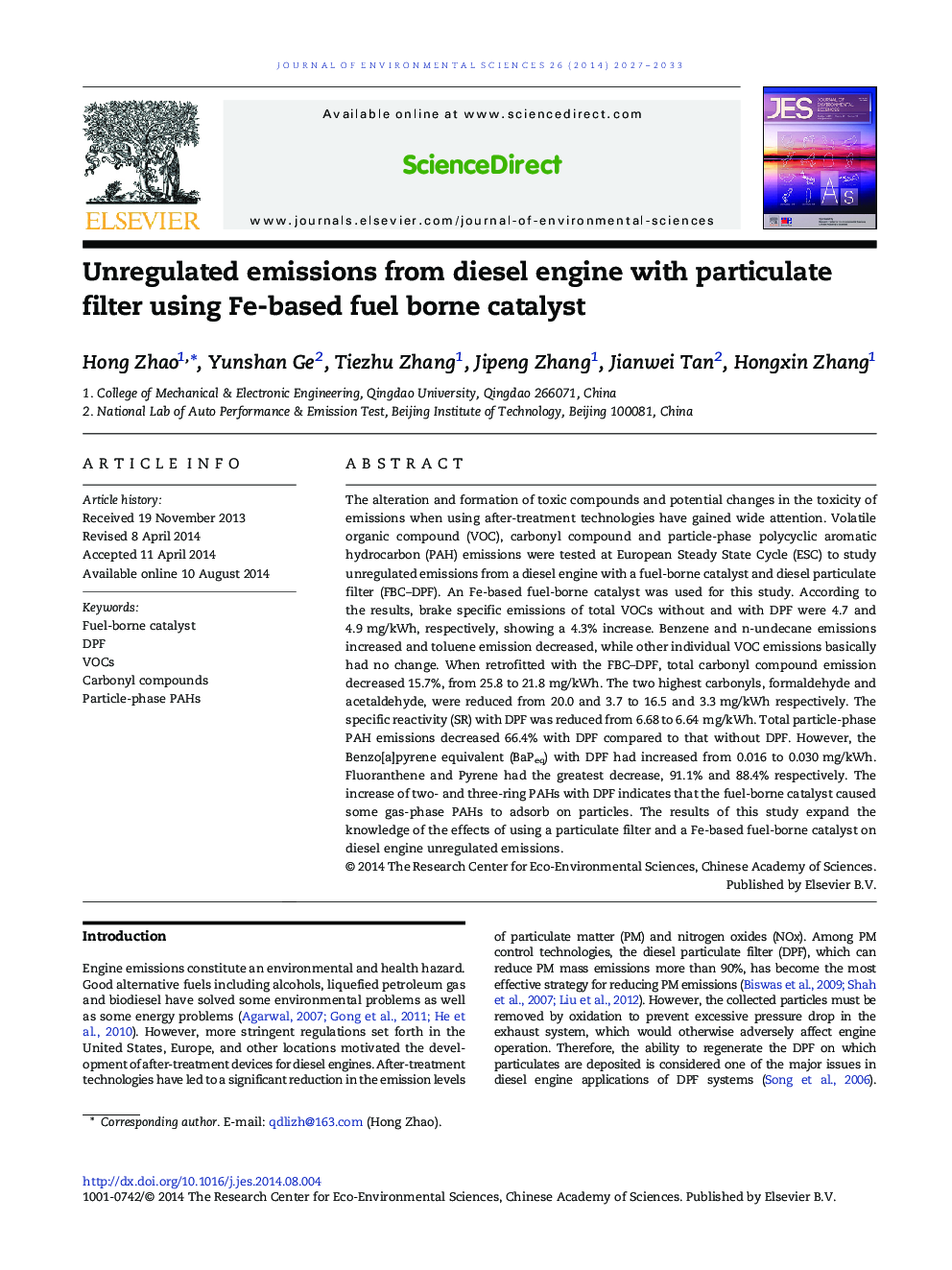| کد مقاله | کد نشریه | سال انتشار | مقاله انگلیسی | نسخه تمام متن |
|---|---|---|---|---|
| 4454395 | 1312479 | 2014 | 7 صفحه PDF | دانلود رایگان |

The alteration and formation of toxic compounds and potential changes in the toxicity of emissions when using after-treatment technologies have gained wide attention. Volatile organic compound (VOC), carbonyl compound and particle-phase polycyclic aromatic hydrocarbon (PAH) emissions were tested at European Steady State Cycle (ESC) to study unregulated emissions from a diesel engine with a fuel-borne catalyst and diesel particulate filter (FBC–DPF). An Fe-based fuel-borne catalyst was used for this study. According to the results, brake specific emissions of total VOCs without and with DPF were 4.7 and 4.9 mg/kWh, respectively, showing a 4.3% increase. Benzene and n-undecane emissions increased and toluene emission decreased, while other individual VOC emissions basically had no change. When retrofitted with the FBC–DPF, total carbonyl compound emission decreased 15.7%, from 25.8 to 21.8 mg/kWh. The two highest carbonyls, formaldehyde and acetaldehyde, were reduced from 20.0 and 3.7 to 16.5 and 3.3 mg/kWh respectively. The specific reactivity (SR) with DPF was reduced from 6.68 to 6.64 mg/kWh. Total particle-phase PAH emissions decreased 66.4% with DPF compared to that without DPF. However, the Benzo[a]pyrene equivalent (BaPeq) with DPF had increased from 0.016 to 0.030 mg/kWh. Fluoranthene and Pyrene had the greatest decrease, 91.1% and 88.4% respectively. The increase of two- and three-ring PAHs with DPF indicates that the fuel-borne catalyst caused some gas-phase PAHs to adsorb on particles. The results of this study expand the knowledge of the effects of using a particulate filter and a Fe-based fuel-borne catalyst on diesel engine unregulated emissions.
Journal: Journal of Environmental Sciences - Volume 26, Issue 10, 1 October 2014, Pages 2027–2033